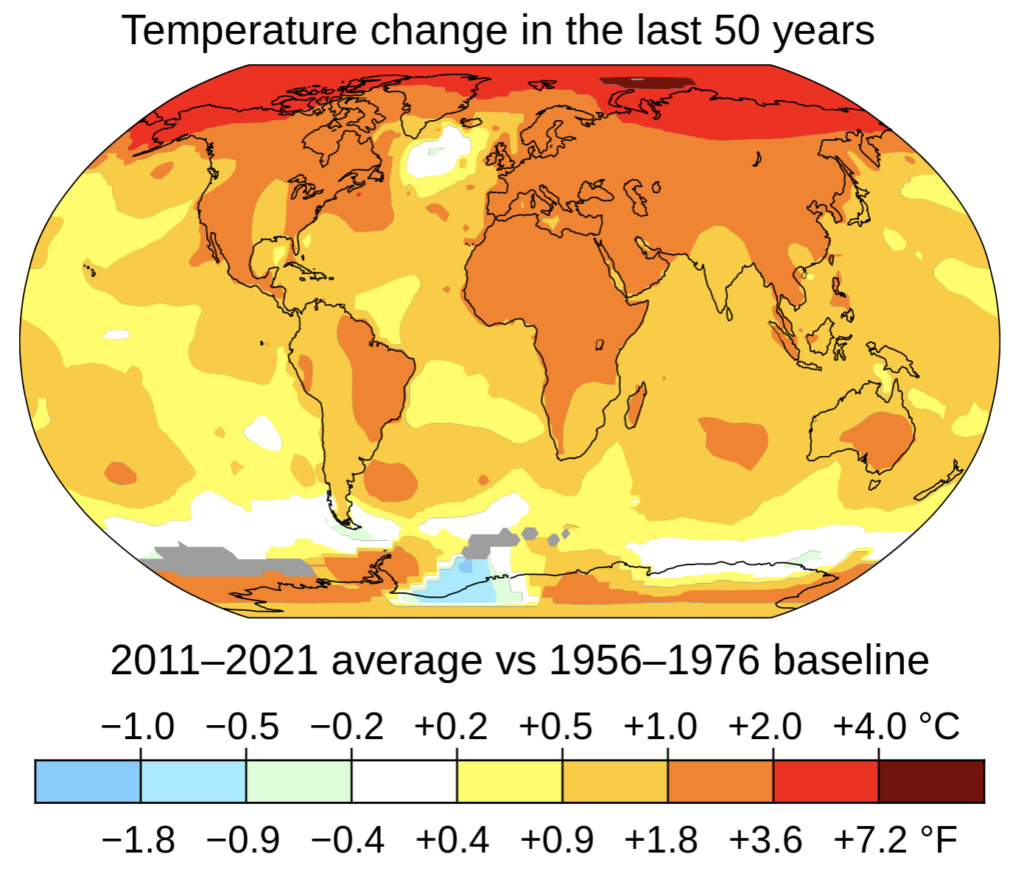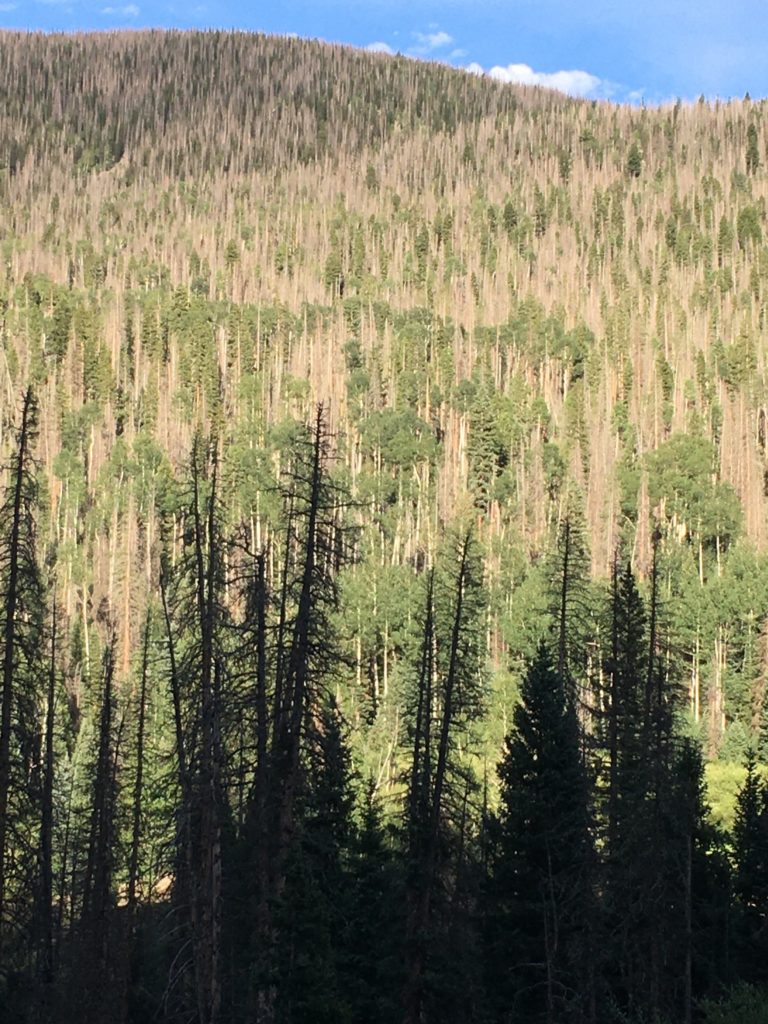
Image courtesy of NASA
It’s been unmistakably hot outside, but some people have different ways of dealing with what most of us recognize as anthropogenic climate change.
I asked one acquaintance what he thought about climate change. We had met when I was selling beer with our Bayfield Rotary Club on the 4th of July. He had come back several times for more beer. When I commented on this, he responded with “Those cans must have holes in them—the beer just seemed to leak away!”
At a chance encounter, I asked him if he thought that climate change was real. “Oh yes, it’s real. Remember that explosion in the power plant in Japan? Well, it knocked the planet 3 degrees off its axis. That’s why the climate is all screwed up!” I think that is as rational as his reason for getting so many cans of beer.
Gail and I were eating dinner with friends recently. I cannot remember how the subject came up, but I asked the person sitting next to me what they thought was making the climate so hot.
“I think it’s a cycle.”
I know this person to be intelligent and responsible. However, I was too flabbergasted to respond, so I changed the subject. The last time Earth’s climate was so hot as it is now was 125,000 years ago. That’s one loonngg cycle!
The way ancient temperatures are estimated is amazing. Scientists measure stable isotopes of oxygen and of hydrogen in air bubbles in Antarctic ice cores. There are known relationships between isotopes and atmospheric temperatures.
We are very good at finding excuses for, or denying completely, what is incompatible with preconceived notions. This is especially true with facts that might interfere with our income or religious beliefs. Misinformation is rampant on Internet, in churches and from politicians.
Let’s look at the facts of climate change. First, is it real?
Yes, climate change is real. There are indications that humans have changed the planet’s climate for millennia, but previous to now, in insignificant ways. The human effect on climate increased after the Industrial Revolution. Then temperatures started to skyrocket about 1950.
What is causing our climate to get hotter? We’ve all sat in a parked car in the summer and know how hot it gets from the greenhouse effect. The energy of the sun gets trapped in the closed environment. We also know that atmospheric carbon dioxide (CO2) is increasing from human use of fossil fuels. However, it may be difficult for people to accept that CO2 is as effective as a car in holding in heat. Other gases, such as methane in natural gas, are even more effective than CO2 as greenhouse gases.
Is climate change just in the future? NO! Severe storms, melting glaciers, enormous fires, the high temperature and drought we’ve experienced are all caused by, or worsened by, what we have done to the climate. Despite good snows last winter, the mega-drought of southwestern North America has been partly caused by the greenhouse gases we have wrapped around our planet.
How can we slow climate chaos? Driving electric is good, but less travel is even better. Increasing efficiency with LEDs helps, so does eating less meat. However, still the best way to reduce your individual carbon footprint is by having a small family—and by encouraging others to do the same. Global population has more than tripled since I was born 80 years ago. The more people, the more CO2 is emitted.
We need to admit that we humans are responsible for climate change before we can conquer it.
©Richard Grossman MD, 2023
